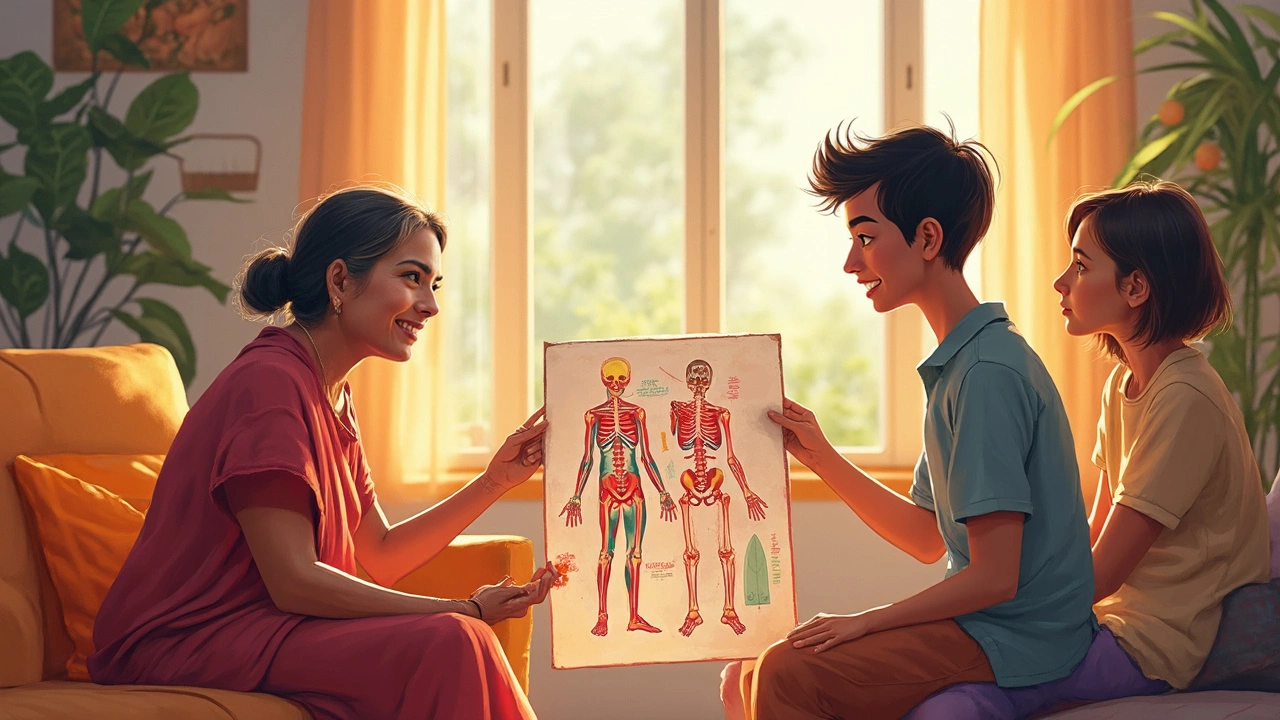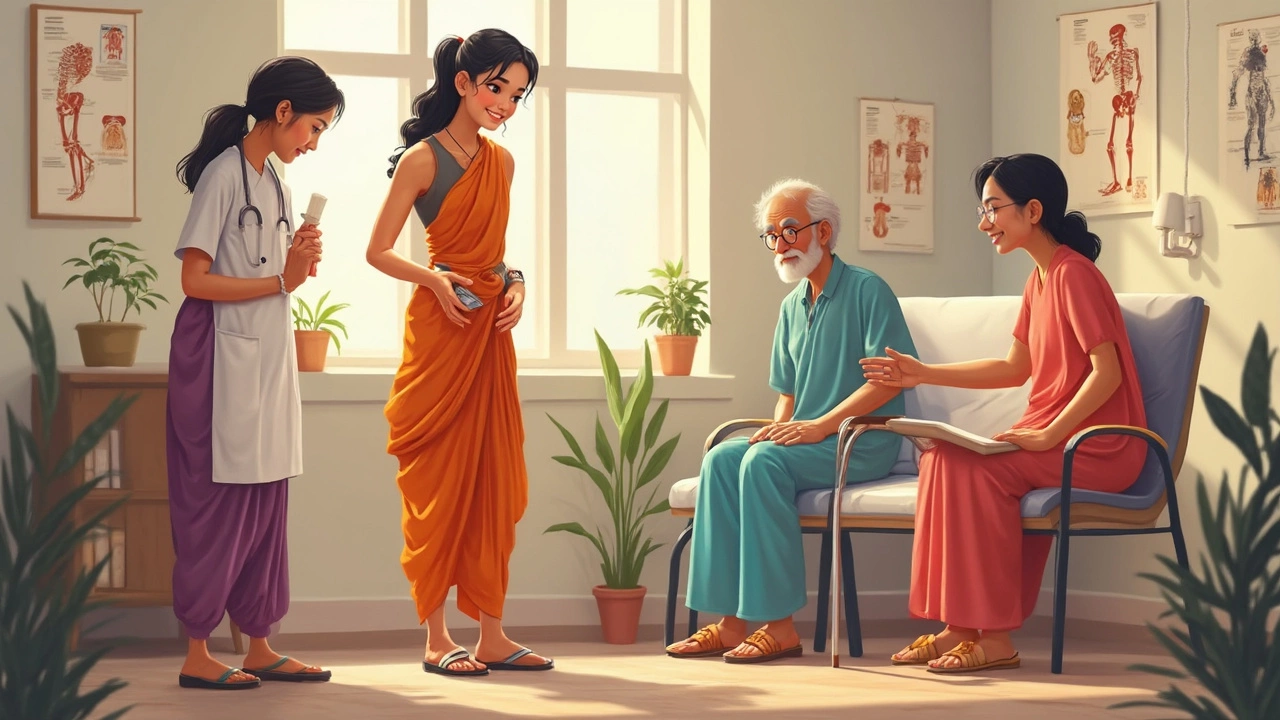-
5

Orthopedic Doctor: What Parts of the Body Do They Treat?
Ever twisted an ankle or felt a weird pain in your knee and wondered which doctor to call? Orthopedic doctors are the go-to experts whenever something’s off with your bones, joints, or muscles. They don’t just stick to broken bones—they handle everything from painful shoulders to sprained wrists to creaky hips that just won’t let you sleep at night.
Here’s the deal: If it hurts to move, bend, or lift, and it’s not getting better on its own, there’s a good chance an orthopedic doctor can help. These docs know everything about your body’s “hardware”—meaning your skeleton, all those connections (like ligaments and tendons), plus the muscles that make you move. And get this: They’re trained to treat everyone, from little kids with growing pains to older adults dealing with joint trouble.
- Bones: The Body’s Framework
- Joints and What Can Go Wrong
- Muscles, Tendons, and Ligaments
- Signs It’s Time to Visit an Orthopedic Doctor
Bones: The Body’s Framework
Let’s face it—your bones are what keep you upright, moving, and actually working as a human. The orthopedic doctor is basically the mechanic for your body’s skeleton. We’re talking about all 206 bones, from your skull down to the tiny ones in your toes. If you’ve ever broken an arm riding a bike or twisted your spine lifting something too heavy, you know these injuries can mess with your life.
Orthopedic hospitals see everything: fractured wrists from sports, broken hips after a fall, collarbone injuries, and more. They even help with bone infections or weird growths, which can sound scary but are surprisingly common. Kids see them for knocked knees or bones that just won’t grow straight. Adults might go in with stress fractures, which can show up if you work out too hard without proper prep or shoes.
Here are some of the main bone conditions and injuries that a orthopedic doctor treats:
- Broken bones (fractures), big or small
- Stress fractures, especially in athletes
- Bone infections (called osteomyelitis)
- Bone tumors (usually benign, but sometimes not)
- Osteoporosis and related fractures
Bones don’t always heal perfectly on their own. If you just “walk it off” after a bad fall, the bone could heal in the wrong position or not heal at all, and that’s a long-term problem. Orthopedic hospitals use X-rays, MRIs, and other scans to get a clear picture. Sometimes you’ll need a cast, surgery, or even metal plates and screws if it’s a really bad break.
Ever wondered how common fractures are? Check this out:
| Type of Fracture | Common Age Group | Healing Time |
|---|---|---|
| Wrist (distal radius) | Kids & adults | 6-8 weeks |
| Hip | Older adults | 10-12 weeks |
| Ankle | Teens/adults | 6-8 weeks |
If you ever hear a snap after a fall, get it checked at an orthopedic hospital. The sooner you get help, the better the odds of healing right.
Joints and What Can Go Wrong
Your joints are the spots where two or more bones meet. Knees, elbows, shoulders, hips—if it bends or twists, there’s a joint behind that motion. Orthopedic doctors deal with all kinds of joint issues, from mild aches to serious injuries that stop you from moving the way you want.
One of the most common problems people face is arthritis—especially osteoarthritis. This happens when the smooth cartilage at the ends of bones wears down, making every move feel stiff or painful. Sports injuries are another big reason people need orthopedic help. Think torn ACLs in the knee or rotator cuff injuries in the shoulder. Simple things like a sprained wrist from a fall or a jammed finger during a basketball game also land people in the orthopedic clinic.
Here are some of the joint problems orthopedic doctors treat all the time:
- Arthritis (including osteoarthritis and rheumatoid arthritis)
- Tendon or ligament tears (like ACL or meniscus injuries)
- Dislocations (when a bone pops out of a joint)
- Sprains and strains
- Cartilage injuries (like a torn meniscus in the knee)
- Bursitis (inflammation of small fluid sacs near joints)
Not sure if you need to see an orthopedic doctor for joint pain? Here’s a quick way to think about it: If your joint pain keeps coming back, lasts more than a week, or the joint is swollen, clicking, or can’t move like it used to, it’s smart to get checked. Waiting too long can make things worse, sometimes even leading to permanent damage that needs surgery.
| Common Joint Problem | Who’s at Risk | Common Symptoms |
|---|---|---|
| Osteoarthritis | People over 45, athletes, overweight individuals | Stiffness, swelling, aching joints |
| ACL Tear | Soccer, basketball, and football players | Popping sound, pain, knee instability |
| Rotator Cuff Injury | Throwing athletes, seniors | Weakness, pain, trouble lifting the arm |
Sometimes joint problems can get better with rest, ice, and over-the-counter meds, but if things aren’t improving or you keep getting injured, an orthopedic visit can make a big difference.

Muscles, Tendons, and Ligaments
When people talk about seeing an orthopedic doctor, they sometimes picture only broken bones. But muscles, tendons, and ligaments are actually just as important. Without these, moving even a finger would be impossible. Here’s how these parts do their job:
- Muscles power your movements. When you pick up your phone, wave to a friend, or simply walk, it’s all muscle action. Orthopedic docs deal with torn muscles, strains, and any weird swelling or constant weakness you might feel.
- Tendons act like strong anchor ropes, connecting muscles to bones. Ever heard of a torn Achilles tendon? That’s a classic injury that can mess up walking big time. Tendonitis—where tendons get irritated from overuse (like too much tennis or typing)—is also super common.
- Ligaments hold your joints together, keeping things stable. Sprain your ankle playing football? That’s a ligament problem. Orthopedic doctors can help if a ligament tears or overstretches, and they even do surgeries like ACL reconstructions for blown knees.
Here’s something wild: soft tissue injuries like muscle and tendon tears are much more common than plain old fractures, especially for people who do sports or physical jobs. Check out these quick stats:
| Condition | How Common? |
|---|---|
| Tendonitis | Over 4 million doctor visits per year in the U.S. |
| Muscle Strain | Almost 50% of all sports injuries |
| Ankle Sprain | 1 in 10 people will have one at some point |
If you feel pain or swelling around your joints, if a muscle suddenly gives out, or if you hear a pop during an activity, don’t brush it off. A orthopedic doctor can tell if it’s something simple or if you need treatment to avoid bigger problems. Quick tip: the faster you get checked out, the faster you heal—and the less chance you’ll be stuck with pain that just won’t quit.
Signs It’s Time to Visit an Orthopedic Doctor
Sometimes it’s hard to know when you should actually see a orthopedic doctor. Maybe you’re hoping the pain will just go away, or you’re not sure if it’s serious. But certain signs mean it’s better not to wait.
- Lingering pain: If you’ve had pain that sticks around for more than two weeks, especially in your joints or bones, that’s worth checking out. Everyday aches shouldn’t last that long.
- Limited movement: If you’re finding it tough to stretch, move, or lift something the way you used to, an orthopedic doctor can figure out what’s holding you back.
- Swelling or bruising: Obvious swelling, redness, or bruises after an injury is your cue to get things checked. These are signs your body is trying to heal something serious.
- Numbness or tingling: When you feel pins and needles, or can’t feel part of your arm, hand, or leg, don’t ignore it. This can sometimes point to nerve issues tied to muscles, or problems with joints and bones.
- Weakness: If a certain part of your body keeps giving out—like a knee that buckles or a wrist you just can’t trust anymore—this is not normal. Time to get it looked at.
Fun fact: Nearly one in seven people will see an orthopedic doctor every year for a muscle, joint, or bone problem. That’s way more common than people think. And the sooner you figure out what’s wrong, the faster you’ll get your movement back with less hassle.
| Symptom | Should You Wait? |
|---|---|
| Pain for over 2 weeks | No—schedule a checkup |
| Visible swelling or bruising | No—get examined soon |
| Sudden loss of movement | No—seek help fast |
If something just feels off with your bones, joints, or muscles, trust your gut. You don’t have to wait for “serious” injury to get help—orthopedic care is all about helping you move better, every day.